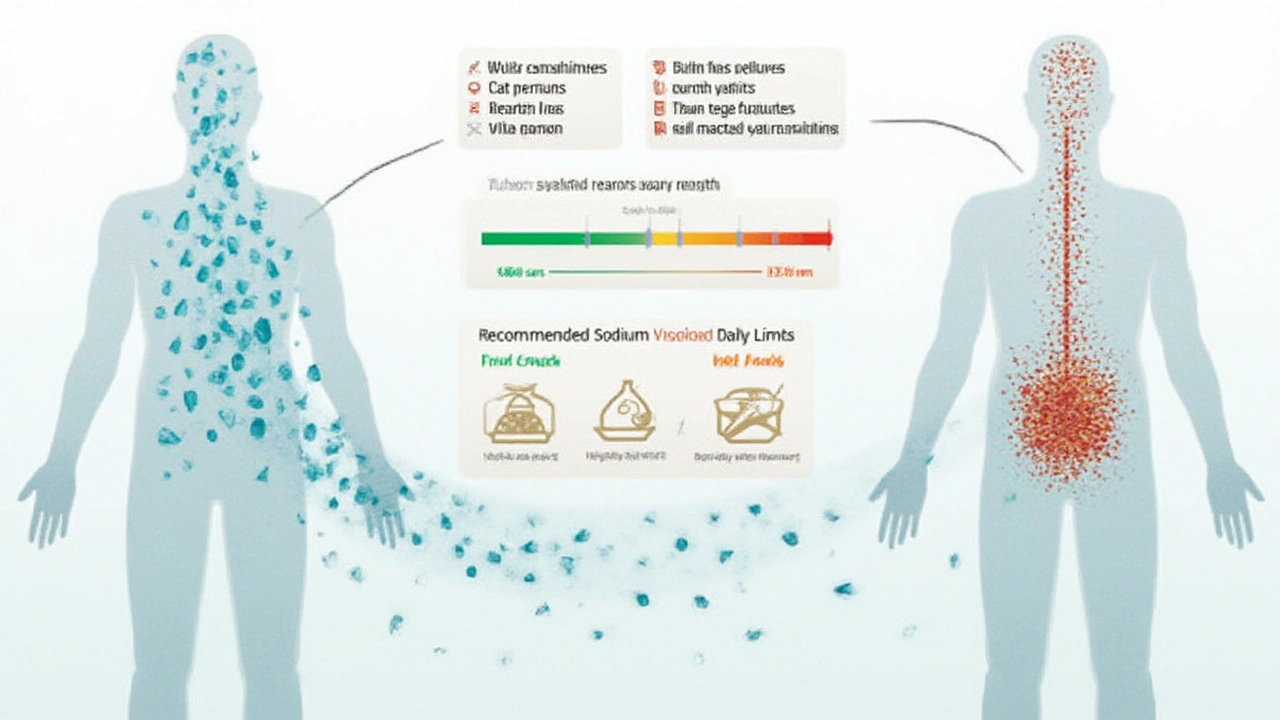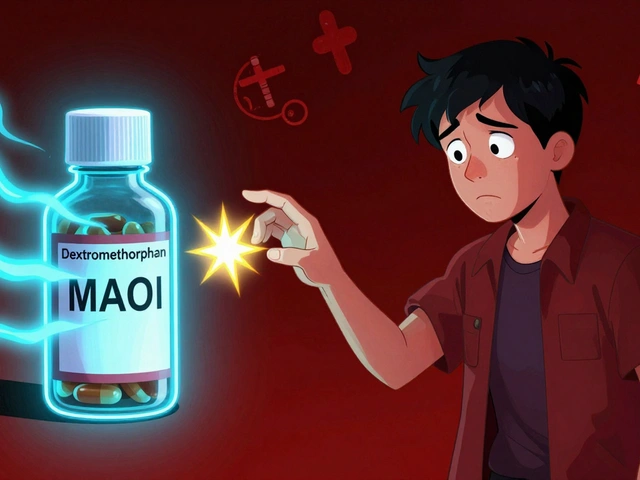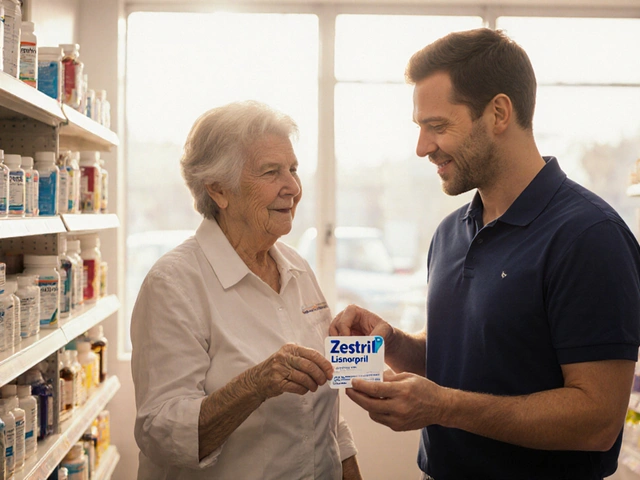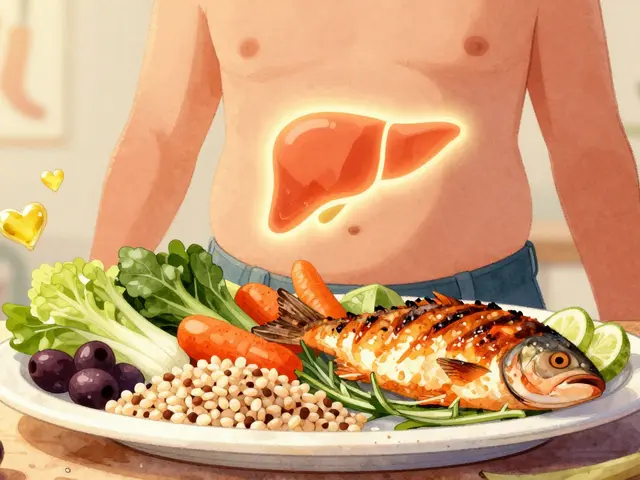Isn’t it wild how you can wake up feeling svelte one day and the next, your jeans bite your waist no matter how much you wiggle? That puffiness, especially after a takeaway night or salty snacks, isn’t just your imagination. Your body has a finely tuned system for balancing water, and sodium (yep, the same stuff in your table salt) is the main character in this story. But how much sodium actually tips the balance? Where’s all this hidden salt sneaking in, and—okay, let’s be honest—what can you actually do about “salt face” or foot swelling fast?
Sodium: Why Our Bodies Hold on to Water
Sodium is like that friend who’s always dragging others into their drama—except it’s water molecules, not people. Your cells want a very specific mix of water and minerals. When you eat more sodium than your kidneys can filter out, your blood becomes saltier. In response, your body holds on to extra water to dilute all that salt, preventing cell damage. It’s a smart biological backup but, wow, does it make you feel ballooned sometimes.
The World Health Organization says adults shouldn’t have more than 2,000 mg of sodium per day—that’s less than a teaspoon of table salt (which is 40% sodium, 60% chloride). But Aussies typically double that, thanks in part to our love of savory snacks and cheeky takeout. And yes, even “healthy” foods can pack surprising amounts of sodium. Your body only needs about 500 mg each day for basic tasks like muscle contractions and nerve signaling. Any more, and your kidneys are working overtime trying to pee out the extra or, if they can’t keep up, your body keeps water around—as a buffer against salt overload. That’s when you start feeling puffy.
Some folks—like older adults, people with high blood pressure, or those with kidney issues—are extra-sensitive. Even small sodium bumps can mean big-time bloating. Hormones (thanks, PMS) also play a part, which is why water retention can hit women particularly hard at certain times of the month. It’s not about completely ditching sodium, though. Your body actually falls apart without it—think muscle weakness, low energy, low blood pressure. It’s about steering clear of excess for your unique situation and knowing your tipping point.
Daily Sodium Thresholds: When Does Salt Become Too Much?
If you’ve ever tried reading those tiny numbers on a nutrition label while juggling a toddler, hats off to you. The “Recommended Dietary Intake” for sodium is about 460-920 mg a day for adults, but that’s the minimum to dodge deficiency. Most guidelines set a practical upper limit at 2,000 mg. For context, one slice of supermarket bread can have up to 200 mg of sodium. An instant noodle cup? Around 1,000 mg—half your daily cap in one hit.
The trickiest part? You often don’t taste how salty a food really is. Processed foods, breads, sauces, luncheon meats, and cheese are packed with “stealth sodium.” Even sweet treats like breakfast cereals and biscuits often sneak it in as a preservative or flavor enhancer. That means you can hit or pass your “too much” level before your main meal is plated.
Here’s a quick table using common foods in Australia:
| Food | Average Sodium (mg per serving) |
|---|---|
| White bread (2 slices) | 300 |
| Instant noodles (1 pack) | 1,200 |
| Vegemite (1 tsp) | 165 |
| Tinned soup (1 cup) | 900 |
| Cheddar cheese (40g slice) | 250 |
| Ham (2 slices) | 460 |
| Soy sauce (1 tbsp) | 900 |
If you’re rarely eating home-cooked meals and grab a sandwich, a snack, maybe a quick noodle dinner, then you can see how it really adds up. Kids aren’t immune, either—the maximum safe sodium for kids aged 4-8 is about 1,200 mg a day, and the numbers just go up with age. Watching those hidden sources is huge if you’re trying to avoid water retention or manage blood pressure.
A quick quiz: Do you eat out more than three times a week? Rely on packaged foods (even “healthy” ones)? Add salt at the table? If yes, you’re likely over your daily threshold, even if you don’t have a salty tooth. That ballooning feeling some evenings? Not a coincidence.
Hidden Sodium: It’s Not Just in the Salt Shaker
About three quarters of the sodium in a typical Aussie diet comes from processed and packaged foods—not your own salt shaker. Marketers love to use terms like “all natural,” “lite,” or “no added MSG,” which tricks you into thinking the sodium count is safe. In reality, even “organic” or “artisan” breads can be sodium landmines. Breakfast cereals, crackers, veggie crisps, and so-called plant-based meat alternatives can have sodium content just as high, if not higher, than mainstream processed meats. Sometimes it’s masked as “sodium bicarbonate,” “disodium phosphate,” or “monosodium glutamate” instead of plain old salt.
- Breads and baked goods: Even brown and wholemeal breads are culprits. Check labels—if you see 400 mg or more per 100g, that’s on the higher side.
- Processed meats: Ham, bacon, sausages, and cold cuts can have 1,000 mg per serve or more.
- Cheeses: Hard and processed cheeses often pack more sodium than soft ones. A single sandwich could wipe out your safe daily budget.
- Condiments and sauces: Soy sauce, salad dressings, and even ketchup bring a sodium wallop.
- Snacks: Potato chips? Predictable. Rice crackers and “protein” snacks? Often less obvious, but still sodium dense.
- Frozen meals and takeaway: Ready-meals and grab-n-go eats are sometimes the worst offenders.
One sneaky spot is “health” foods marketed as low sugar or gluten free. They make up for lost taste by adding more salt. Even non-salty-tasting items like canned beans, artichoke hearts, or olives are brined. That’s why getting into the habit of checking the sodium line under “Nutritional Information” really helps. Food companies in Australia must state sodium per 100g—so compare easily between brands.
And don’t brush off sodium from drinks. Vegetable juices and sports drinks, especially those for “rehydration,” are sometimes saltier than you’d think. Next time you feel swollen after a hangover cure or post-sport chug, check the label.

Lifestyle Tweaks to Prevent Sodium-Induced Water Retention
I get it—no one wants endless meal prep, and “eat less processed food” sounds easier said than done on crazy weekdays. So what can you actually do right now to dodge that miserable post-salt bloat?
- Hydrate like you mean it: Weird as it sounds, the more water you drink, the less your body hoards after a salty meal. Enough fluids help your kidneys flush excess sodium quicker. Sip plain water, herbal tea, or, if you like flavour, go for a splash of lemon or cucumber.
- Pile up the potassium: Bananas, sweet potatoes, tomatoes, spinach, and oranges help balance out sodium—potassium helps your cells “release” water and moves sodium out in your urine. The more potassium-rich food you eat (not supplements, real food), the less likely you’ll puff up from a salty meal.
- Cook at home when you can: Making just a few more meals at home slashes hidden sodium. Use fresh herbs, spices, lemon juice, garlic, or pepper for zip without salt. Taste before you season.
- Read those food labels: Even if you only do it on the foods you eat all the time (your go-to crackers, cheese, soup), you’ll spot easy “swaps” with lower sodium. Look for under 120 mg sodium per 100g as a low target.
- Keep processed snacks ‘sometimes’ foods: Not villainizing your kid’s Vegemite toast or your own Friday night pizza habit, but keeping heavily processed and salty foods occasional—not daily—makes a real difference.
- Choose fresh over canned: Where possible, go for fresh or frozen veggies (with no added sauce). If you use canned, rinse them under running water. This literally washes up to 40% of the sodium away.
- Watch out for “diet” foods: Sometimes low-fat or low-calorie versions are saltier than the originals, to make up for lost taste.
- Ask for “no added salt”: When eating out (especially in Asian restaurants), see if they can make it without that final salty sprinkle or swap in lemon. Shy? Most places these days are totally used to requests.
Want a deep dive on why sodium causes water retention? Check out this helpful explainer—does sodium make you retain water—for more science-backed answers.
For many families, setting up “low sodium” swaps is also a money saver. When you snack on fresh fruit, air-popped popcorn, or DIY trail mix, you’re often spending less than you would on salty packaged stuff, and you don’t get the squish-around-the-middle the next morning. Plus, teaching kids these habits pays off big time—sodium preferences are learned in childhood.
Recovery: How to Deflate Fast after a Sodium Overload
You caved to hot chips or that irresistible bowl of ramen. It happens to the best of us (I have a serious weakness for salted caramel—Sorrel has learned to ration the popcorn for me). Here’s your go-to plan for bouncing back from the bloat:
- Flush with water: Chug a glass (or two) of water as soon as you realize. Extra fluids help dilute the sodium and get things moving in your kidneys.
- Move your body: Gentle physical activity—walking, stretching, even cleaning the house—helps your blood flow return to normal. That movement gets excess water out of your tissues.
- Skip extra salt: For the next couple of meals, cut out salty snacks and canned foods. Don’t add salt to your eggs or dinner plate while you recover.
- Reach for potassium-rich foods: Foods like kiwi fruit, spinach, avocado, and yoghurt are especially good right after a salt-heavy meal.
- Elevate your feet: If your ankles are puffy, put your feet up. Gravity helps extra fluid drain away from your legs.
- Go easy on the coffee and alcohol: Both can pull water out of your system, making it tempting to double up on sodium to quench thirst—which makes things worse.
Bloating from sodium is usually short-lived. Most of the discomfort wears off within 24-48 hours of normal eating and drinking. But, if your rings won’t come off or your eyelids are seriously puffy, take a little extra care to rest, hydrate, and eat light. If you find water retention sticking around longer, or it comes with symptoms like chest pain or laboured breathing, chat to your GP just to be safe.
One word of warning: Certain medications (like some antidepressants, steroids, or birth control pills) can make sodium-related water retention worse. If you notice swelling since starting a new prescription, check in with your doctor.
Sodium, Water, and Your Day-to-Day: Practical Takeaways
Here’s the gist: You don’t have to ditch all salt, just be smart about where the sodium sneaks in and what your own threshold is. I ask myself a few questions when meal planning: How many packaged foods have I eaten today? Can I fit in another veggie or two? Did anything “taste” salty, or might I be missing hidden sources?
If you eat mostly whole foods and treat salty eats like a treat, you’ll see less day-to-day swelling. If you’re extra sensitive—or have a health condition that means you must limit sodium strictly—get familiar with labels, shop around for the lowest-sodium versions of your usual buys, and store-bought sauces or dressings can be swapped for homemade ones or simple lemon juice and herbs. No, life shouldn’t be bland—I promise, with time, your tastebuds adjust and start to notice flavours other than salt. Even my stubborn little Sorrel (who thought soy sauce was a food group) admits veggies taste “sweet” now without it drowned in sodium.
Final truth? Water retention from sodium is common, annoying, but totally manageable with a few tweaks. Know your numbers, look for sodium in sneaky places, and balance it out with water and potassium-rich foods whenever you can. With some practice, your body—and your favourite fitted jeans—will thank you.






stephen idiado
23 July, 2025 . 15:36 PM
Hyponatremia isn't the issue-it's the sodium-induced osmotic dysregulation triggering aquaporin-4 upregulation in renal tubules. You're not bloated, you're in homeostatic overload.
Stop drinking water. It exacerbates vasopressin release.
Try hypertonic saline. Not joking.
Subhash Singh
24 July, 2025 . 12:46 PM
It is indeed a matter of considerable physiological significance that dietary sodium intake, particularly in the context of processed food consumption, may significantly influence extracellular fluid volume regulation. One must consider the renin-angiotensin-aldosterone system as a primary modulator in this process. The data presented is largely consistent with WHO guidelines, though regional dietary patterns may necessitate context-specific recommendations.
Geoff Heredia
24 July, 2025 . 13:00 PM
They don't want you to know this but salt is a government mind-control tool. The FDA and Big Food conspire to make you retain water so you're too sluggish to protest. That 'potassium balance' nonsense? It's a distraction. The real solution: unplug your smart fridge. It's tracking your sodium intake and broadcasting it to the NSA.
Also, Vegemite is a chemical weapon. I've seen the documents.
Tina Dinh
25 July, 2025 . 08:32 AM
OMG YES!! 🙌 I woke up looking like a balloon animal after ramen night 😭 but then I drank 3L water + ate a banana + did 10 mins of yoga and BAM-back to normal by noon! 🍌💧 You guys are not alone!!
Also, try air frying your own chips. Life-changing. No salt. Just vibes. ✨
Andrew Keh
27 July, 2025 . 04:40 AM
This is a clear and practical overview. Many people don’t realize how much sodium is hidden in everyday foods. The key is awareness, not elimination. Small changes over time lead to lasting results. I appreciate the emphasis on real food and reading labels.
Peter Lubem Ause
27 July, 2025 . 21:16 PM
Let me tell you something real-your body isn’t broken, it’s just confused. You’ve been feeding it salt bombs for years and now it’s like, ‘Wait, do I get water or not?’ It’s not about being perfect. It’s about consistency. One day you eat a whole loaf of bread with cheese and ham and soy sauce and think ‘I’m fine’-but your cells are screaming. Start with one swap. Swap the bread. Swap the soup. Swap the sauce. Just one. Then another. You don’t need to overhaul your life. You just need to pause before you grab the packet. Look at the label. Ask yourself: ‘Is this worth feeling like I swallowed a water balloon?’ If the answer’s no, put it back. Your jeans will thank you. And so will your future self who isn’t reaching for the elastic waistband at 40.
linda wood
28 July, 2025 . 20:56 PM
Wow, so we're supposed to believe that potassium magically fixes everything? Like, sure, bananas are great... but did you also know that the ‘low sodium’ chips have 30% more sugar? And that’s the real problem? I mean, I get it, but let’s be real-this whole thing is just a fancy way to sell kale and $12 avocado toast.
Also, I’m pretty sure my bloating is from my ex. Just saying.
LINDA PUSPITASARI
30 July, 2025 . 19:03 PM
So true about rinsing canned beans 😍 I do it every time and it cuts the sodium by half!! And potassium is my BFF-sweet potatoes, spinach, yogurt, avocado, bananas, coconut water, all of it!! I literally feel lighter after a potassium bomb meal 🌱💧
Also, lemon water in the morning? Game changer. No salt needed. Just pure glow. ✨
gerardo beaudoin
31 July, 2025 . 01:19 AM
Biggest thing for me? Cooking at home even just 3 nights a week. I used to eat out daily. Now I make a big pot of rice and beans with cumin and lime. Tastes amazing. No salt. No guilt. And I don’t feel like a balloon the next day.
Also, drinking water before I eat helps me not overdo it. Simple stuff.
Joy Aniekwe
1 August, 2025 . 21:48 PM
Oh please. You think sodium is the problem? It’s the patriarchy. They made us love salty snacks so we’d be too bloated and tired to rebel. And now we’re all just eating ‘healthy’ snacks that are just salt in a different costume.
Also, your ‘low sodium’ bread? Still a trap. I checked. I always check. I’m the salt detective. 💅
Latika Gupta
2 August, 2025 . 22:17 PM
Can I ask... do you think this applies to people who only eat Indian food? Like, we use so much spice but not always salt... I’m just curious. My aunt says our dals are fine. But I feel puffy after biryani. Is it the ghee? Or the salt in the yogurt?
Sullivan Lauer
3 August, 2025 . 04:43 AM
Let me tell you something that changed my life. I stopped eating anything that came in a box, bag, or can. Not because I’m extreme. But because I realized my body wasn’t built for chemical cocktails disguised as food. I started with breakfast. No more cereal. No more toast with jam that had sodium benzoate. I switched to oatmeal with cinnamon and sliced apple. And guess what? I stopped waking up looking like I’d been inflated by a bicycle pump. It wasn’t magic. It was just… real food. And now? My skin glows. My eyes aren’t puffy. I don’t need to unbutton my jeans after lunch. I didn’t know I was suffering until I stopped. And now I can’t go back. This isn’t a diet. It’s a return to sanity.
Sohini Majumder
4 August, 2025 . 12:25 PM
Ok but like... who even reads nutrition labels?? 😩 I just know I feel like a balloon after pasta. And also, why is everyone obsessed with potassium?? Like, I eat bananas but I also eat pizza. Life is a paradox. Also, I think the writer is just trying to sell herbal tea. #SaltIsLife
tushar makwana
5 August, 2025 . 13:05 PM
Interesting point about canned beans. In India, we rinse lentils and beans before cooking anyway-this is tradition, not trend. My grandmother said, ‘Wash away the bitterness, wash away the heaviness.’ She didn’t know about sodium, but she knew about balance. Maybe the old ways were smarter than we think.
Richard Thomas
6 August, 2025 . 23:10 PM
The empirical data presented herein lacks sufficient methodological rigor. The correlation between sodium intake and perceived edema is confounded by uncontrolled variables including circadian rhythm, hormonal fluctuations, and subjective reporting bias. Furthermore, the assertion that hydration mitigates sodium-induced retention contradicts the osmotic equilibrium principles outlined in Guyton and Hall’s Textbook of Medical Physiology. One must question the evidentiary foundation of such popularized health claims.
Matthew Higgins
7 August, 2025 . 03:57 AM
Been there. Ate the ramen. Felt the puff. Then I just walked around my apartment for 20 minutes while listening to lo-fi beats. Didn’t even drink extra water. Just moved. Felt better. Sometimes it’s not about what you eat-it’s about how you move after.
Mary Kate Powers
8 August, 2025 . 15:29 PM
You got this. Every small choice adds up. Even swapping one snack a week makes a difference. You’re not failing-you’re learning. And your body is already thanking you, even if you can’t feel it yet. Keep going. 💪
Sara Shumaker
10 August, 2025 . 13:53 PM
What does it mean to live in balance? Is sodium the villain, or just a mirror reflecting how disconnected we’ve become from food? We don’t grow it. We don’t harvest it. We don’t even know what’s in it. Maybe the bloating isn’t just from salt-it’s from living in a system that treats our bodies like machines that need ‘fixing’ instead of nurturing. What if the real solution isn’t less salt… but more presence?
Scott Collard
10 August, 2025 . 23:23 PM
Stop. Just stop. You think you’re being healthy by rinsing beans? You’re still a slave to the system. Real change means cutting out all processed food-including ‘healthy’ brands. Go primal. Eat meat, vegetables, water. That’s it. No labels. No ‘low sodium’ lies. Just nature. You’re not ready. But you will be.